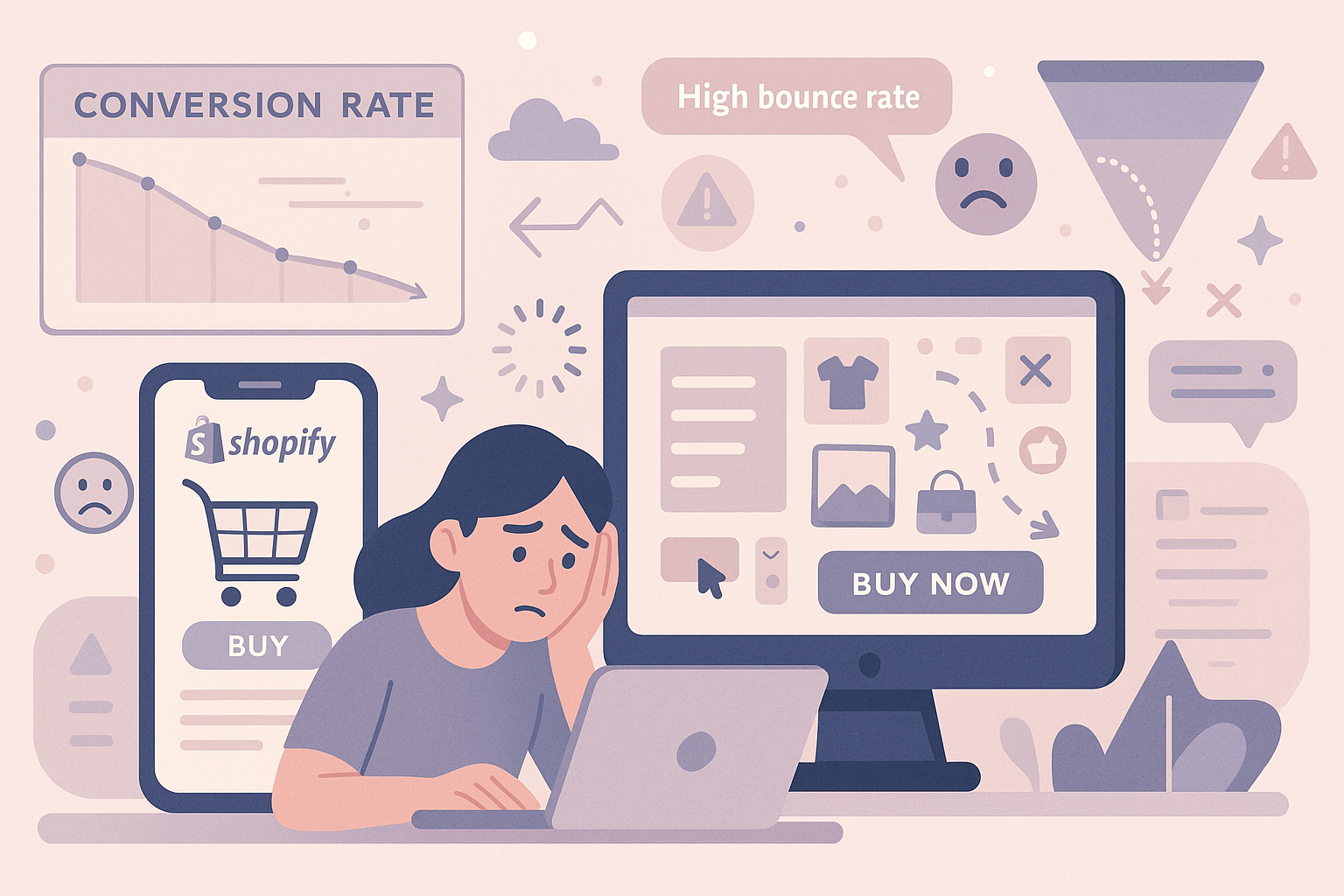If your Shopify store isn’t converting, it’s not just frustrating - it’s expensive. Before diving into heatmaps and A/B tests, take a step back. This guide flips the CRO script by starting with symptoms, not solutions. We’ll help you identify the root causes of a low conversion rate, then prescribe fixes that actually move the needle.
1. Slow Load Times
Symptom: High bounce rates within 3 seconds.
Why it matters: 70% of shoppers abandon if a site loads slowly.
Fix it: Compress images, use Shopify’s native speed tools, remove unused apps and scripts, and switch to a faster theme.
2. Poor Mobile Experience
Symptom: Mobile conversion rate is half that of desktop.
Why it matters: Over 75% of Shopify traffic is mobile.
Fix it: Use responsive, mobile-first themes, test all CTAs on small screens, simplify form fields, and eliminate unnecessary popups.
3. Lack of Trust Signals
Symptom: High product page views, low add-to-cart rates.
Why it matters: Shoppers hesitate if trust isn’t established.
Fix it: Add reviews, trust badges, return policies, live chat options, and secure checkout icons.
4. Weak Product Pages
Symptom: Lots of traffic but few clicks on ‘Add to Cart.’
Why it matters: If product pages don’t answer key questions, shoppers bounce.
Fix it: Include video demos, high-res photos, FAQs, social proof, and comparison charts if needed.
5. Confusing Checkout Flow
Symptom: High drop-off at payment step.
Why it matters: Checkout friction kills intent.
Fix it: Use express checkout options like Pay by Bank or Shop Pay, minimize fields, enable auto-fill, and reduce surprise fees.
6. Mismatched Traffic Sources
Symptom: High ad spend, low ROAS.
Why it matters: Unqualified traffic doesn’t convert.
Fix it: Reassess your targeting strategy, exclude low-intent audiences, and ensure your landing pages match ad promises.






